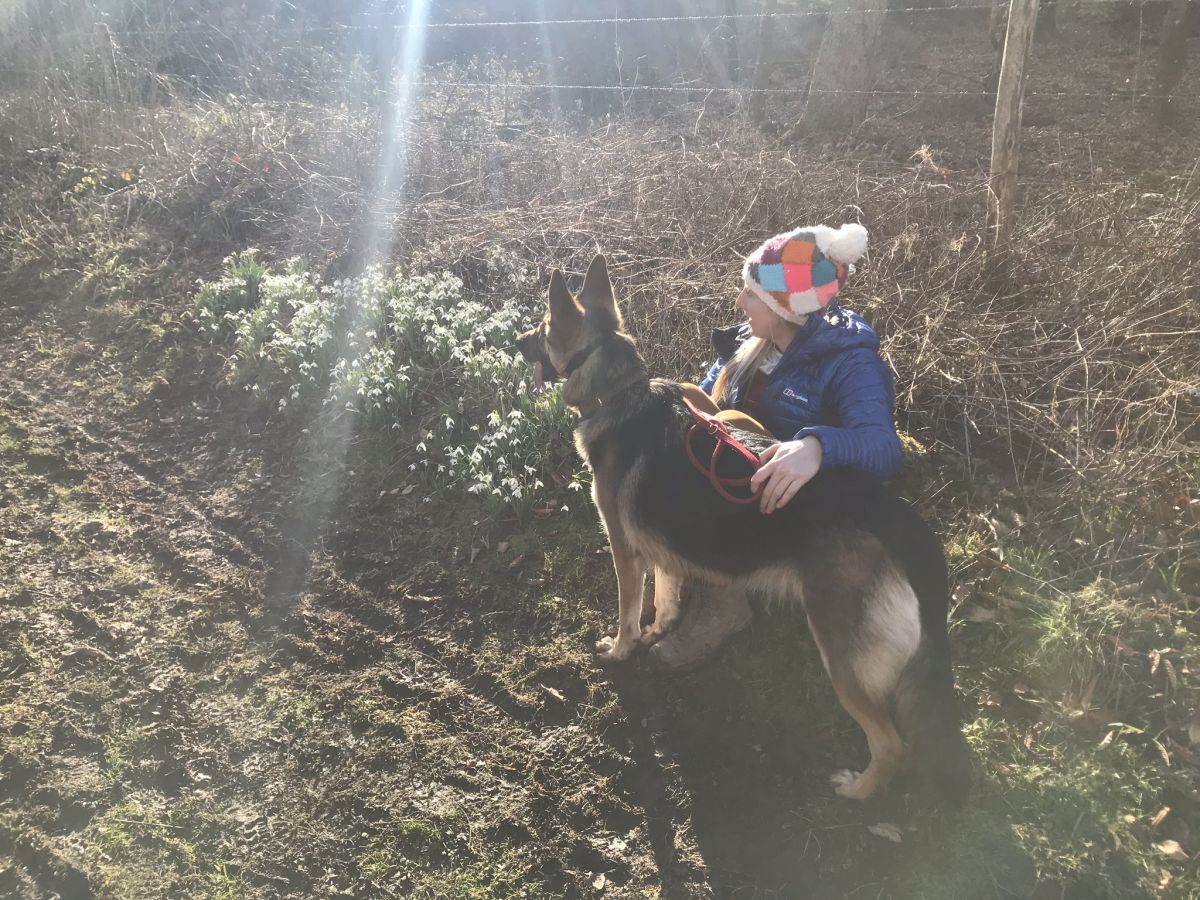
by hattenburrow | Apr 15, 2018 | Adventure, Inspiration
As the nights get lighter and the days a little brighter the opportunities for us to get out on adventures increases! Have you been on a micro adventure in the UK?
You only get one life, you get to choose how you spend your time, but sometimes ‘adventure’ can seem financially out of reach however there is no need to reside yourself to the dull and mundane just yet. There are endless micro adventures you can get up to here in the UK without spending a fortune or needing a month off work, here is my top 10:
1. Head for your local trail center! I am a little biased as mountain biking is my passion so of course biking micro adventures are top of my list, but in the UK we have some great trail centers where there are routes for all abilities from green which is beginner level and good for children to black and orange for those for who their wheel to leave the ground and like it to be steep and technical. In the south head for Queen Elizabeth Country Park or Swinley Forest further afield Cannock Chase and the Chiltern Hills are super fun! If you need a little confidence boost book yourself a morning with a coach to help improve your cycling ability. Mountain bike trail guide coming soon subscribe to keep up to date.
2. The UK capital of adventure personally would be Wales. Head for Snowdonia for a micro adventure, where you will find great camping spots, pretty b&bs plenty of sheep along with loads of outdoor activities from white water rafting to climbing. At Plas Y Brenin you can get great coaching in kayaking and climbing.
3. Surf’s up! Jutting straight out into the Atlantic Ocean, Cornwall is a magnet for swell, creating perfect waves for surfing! Also having some of the best beaches in the UK ideal for rock pooling and beach combing adventures. Why not take on a litter pick for surfers against sewage at the same time. A micro adventure with purpose!
4. Go for a wild swim – whether it’s a lake, river or the sea find some friends and go for a dip! Remember to check the tide times if you pick the sea and a wet suit could be a good shout!
5. Sleep outside without a tent – you can pick up a bivvy bag from Go Outdoors armed with this and perhaps a friend or two and a camping stove and your local woods could become your first micro adventure.
6. See how far you can run/walk/cycle in a weekend/day/morning/evening…
7. Take a new route to work – Micro adventures can happen at any time, why not have one five days a week, I am fortunate enough to live on the South Downs a beautiful area. I first discovered just how beautiful when I mixed up my commute routes for a couple of weeks not only did this give me a real sense of achievement in finding new ways to work but I could use these cycling routes as new training rides as well.
8. Use this great site called Fancy Free Walks to find a walk from a new place. Martyn and I have been using this site to explore our local area finding walk with good pub stops and making an adventure of it.
9. Scotland – The most beautiful and wildest part of our great Island. Okay it can take a while to get there but the sleeper train from London is a great option or why not drive and stop off at different places along the way to make a real road trip of the UK. Read about biking in Scotland.
10. Enter a race! Not to win (unless you want too) but for the adventure. Racing gives you a reason to exercise and motivation to get outside and maybe try something new. There are loads of sites which have these types of challenges like Rat Race, Tough Mudder and Cycling Events UK the bonus is your likely to get a badly fitting t-shirt and a medal as well! Read about my Mum and I racing in the New forest.
Share your micro adventures with me on Facebook.
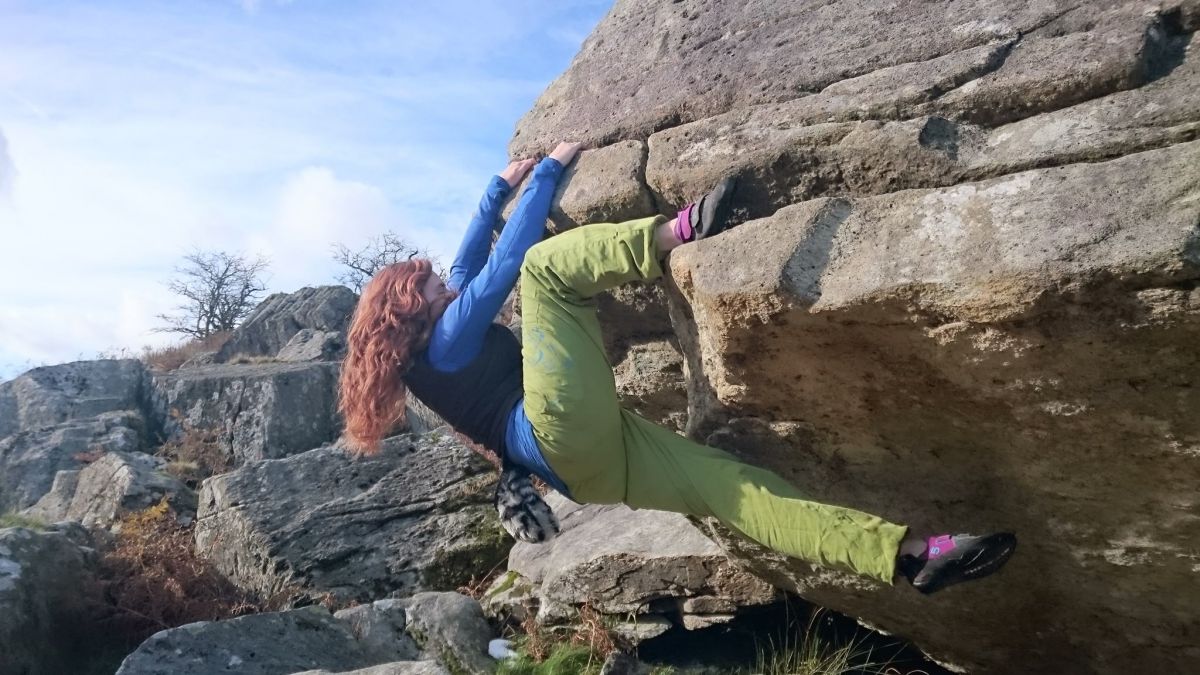
by hattenburrow | Dec 12, 2017 | Adventure, Inspiration
Georgina’s top climbing spots in the UK:
Obviously, the ‘best’ climbing is subjective. Climbing styles and abilities vary from person to person. But for those searching for some recommendations of places to check out, here are a few of my favourites from the places I have travelled over the years, with links to further information on the areas.
Indoors
- The Boardroom Climbing Centre (Cheshire).
The Boardroom is one of my favourite places to climb indoors for one very simple reason. They have a simulated 8m high Psicobloc, which turns out to be the only one in Europe, and one of only a handful in the entire world. They also have a bunch of other good bouldering, some classy route sections, a neat little training room including a lattice board and a slackline, and they serve delicious food as well, such as home-made pizzas. The prices are reasonable too!
- Awesome Walls (any of them, but my experience is based on the Sheffield centre)
Awesome Walls is a chain (I know I know, but these days it’s becoming increasingly difficult to avoid chains!) with climbing centres based in Sheffield, Stockport, Stoke, and Liverpool. They are known for their big walls and long routes (Sheffield has a 23m competition wall, overhanging by 12m), and from my experience always contain nice training areas (the one in Sheffield is a nice platform from which to view the big wall and has a few slacklines set up as well!). Awesome Walls often holds lead competitions in particular, but I have also seen Speed Climbing being practised there and the bouldering isn’t too bad either! They also do a pretty nifty loyalty card and membership is valid across their different sites.
- Ice Factor (Kinlochleven – between Ben Nevis and Glencoe)
Ice Factor brings something altogether different to this party. Not only does it consistently rank in the best climbing centres in the world, and not only are its walls some of the highest in the U.K., but as the name suggests, it holds the biggest indoor ice climbing wall in the world. Despite being a bit out in the sticks for the majority of us, the trek is definitely worth it for some quality time on the ice whilst not leaving the U.K.!
Outdoors
Wales 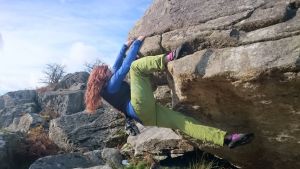
I can’t recommend Wales enough for it’s incredible climbing across several different disciplines and nearly all types of rock. Multi-pitch climbs in Snowdonia such as those on Tryfan are such joys to climb. The glorious slate close to Llanberis, and the boulders around the pass. Epic trad climbs at Gogarth and of course down south in Pembroke, along with some absolute gems of all kinds in the Gower as well. Wales has a magic about it that I haven’t quite managed to find anywhere else, and the Welsh people are some of the loveliest you’ll ever meet!
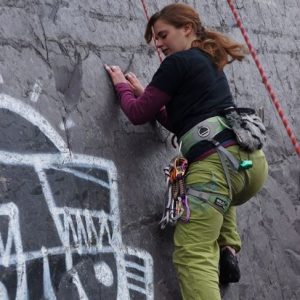
North Wales
South Wales
- Bees (Lake District)
St Bees is a bit of a gem of a find, even if you’re not looking to climb. The walk-in can be a bit of an adventure in its own right, with the bouldering nestled in a sun-trap next to the sea, underneath the 100m+ cliffs of St Bees Head and the watchful eye of an old lighthouse, a couple of seals, and in the distance, the Isle of Man. The climbing here is sandstone bouldering mainly, with some sport routes that can be a bit seepy and restricted due to the nesting birds at certain times of the year, but definitely has something to suit every style, and is beautiful to look at. Instagram coming at ya.
- Torridon (Scotland)
Whilst being a bit of a trek to get to for most Brits (north-west highlands), Torridon has a brilliant number of sandstone boulders in an area of outstanding natural beauty on the coast, along with some trad climbs and if the conditions are right, even some winter climbs. Be careful with some of the grades around here though, as they can be a bit sandbagged at times, or even feel too easy!
Bouldering
Trad
Bonus Recommendations
I know I said this blog was about some of my favourite places to climb in the UK, but I couldn’t help but recommend some other places further afield (besides the obvious choices like America, Spain, Font, etc…) if you the time, money, and opportunity.
- Wadi Rum (Jordan)
 Climbing amongst the very different type of (soft) sandstone found in the deserts here is simply spectacular, and to be honest, sometimes rather scary! But it is always thrilling, beautiful, and again, there is something for everyone. The locals are incredible and happy to guide you around what is sure to be a memorable experience even if you don’t climb. However, be sure to bring your own gear and do your own organising and planning of the trip, as climbing as the western world knows it is very different to life in the small village of Rum.
Climbing amongst the very different type of (soft) sandstone found in the deserts here is simply spectacular, and to be honest, sometimes rather scary! But it is always thrilling, beautiful, and again, there is something for everyone. The locals are incredible and happy to guide you around what is sure to be a memorable experience even if you don’t climb. However, be sure to bring your own gear and do your own organising and planning of the trip, as climbing as the western world knows it is very different to life in the small village of Rum.
- Kotecnik (Slovenia)
Perhaps the most extensive climbing area in Slovenia, hidden away in the forest near Celje is one of the most incredible crags I have ever laid my eyes on. 11 sectors containing a total of 334 routes, the sport climbs here are world class and spans every style you can think of. Not too hot in the summers since the trees shade most of the sectors, the walk-in to the furthest sector only takes 35 minutes.
- Rjukan (Norway)

Rjukan is a bit of an ice climbing Mecca. Road-side cragging situated just a few hours from Oslo, it is achievable to get a few decent ascents in even if you’re only visiting for a long weekend. The Old School Hostel is a hub for visiting ice climbers and a test centre for Black Diamond, and the area as a whole is magical for beginners and advanced alike. With the Gaustatoppen Ski Resort situated a free bus ride away up one side of the valley, it is even possible to make the trip using only public transport.

by hattenburrow | Dec 4, 2017 | Adventure, Mountains
Hi Folks! I hope you’re having an awesome run up to Christmas. As part of my guest post series I would like to introduce you to Spider women herself! Miss Georgina Jackon;
“During the weekdays I am a systems engineer for a large British aerospace company, and during the weekends I do my best to get out in my self-converted van with my partner and have fun. Whilst we mostly climb, walk, scramble, slackline and practise acroyoga in the U.K., we try to get abroad to new and exciting places as often as possible and to try different things, such as Scuba Diving in the Jordanian Red Sea in April.”
Over the next two weeks Georgina will, explain the many types of climbing and then shall her favourite spots to try this fantastic sport.
Climbing is for everyone. And it will solve pretty much all of your problems.
This is not a statement that I make lightly. I have climbed with blind people. I have climbed with those who have no lower limbs. I have climbed with toddlers, teenagers, pensioners, and everyone in between. I have climbed as part of a team and I have climbed alone. And that’s just at my local indoor wall.
Climbing is one of those special things that forces you to focus on the moment. It forces you to live right here, right now. Because if you don’t, well, you fall. And it is that very thing – falling – which will make you a better, well-rounded person in every-day life.

Falling brings people together. The climbing community is unlike anything else I have ever found in life. It is honest. It is humble. It is more supportive than you could imagine. It is diverse, it is willing to learn, and it is definitely willing to teach. The sport seems to demand it, really. I mean, the only way to learn how to climb is to do it. And by definition, learning often involves failing, which in this case involves falling off. In this way, climbing can build confidence. It builds endlessly on psychological factors in how far you can push yourself, fighting the instinctive and inherent fears involved with falling, and in building trust and good relationships in those you climb with. You would be amazed how much it builds physical strength and co-ordination, and yes, in places you wouldn’t expect!
It is not too expensive. It is not restrictive. It is beautiful, it is inclusive, and it is personal and respectful, and for a lot of people it becomes a way of life.
There are many different types of climbing – definitely enough to suit all needs and types, and each has its own quirks and nuances and differences, and each also receives the respect that it deserves from the climbing world.
Bouldering 
Bouldering is typically climbing on boulders (go figure), without any ropes. This means that often routes can be quite short, with quite powerful and/or technical moves. Bouldering has two ‘spin-off’ disciplines. One is called ‘high-balling’, which is where the boulder is particularly tall and so the route is especially long in length for a boulder, making any potential falls and landings dangerous. Particularly if bouldering outside, a ‘spotter’ will be used by the climber. A spotter is a person who stands near to the climber, prepared to support the climber if need be or push them towards a safe landing or landing position if they fall. The other spin-off of bouldering is called deep-water soloing, which is the same type of thing again, but done above deep water. This means if you fall off the climb, you fall into the water and not onto the ground (or a crash-pad!).
Sport Climbing
Sport climbing is where someone has placed protection into the rock already in the form of bolts, in a fairly even spread over the length of the route. To this end, the routes are often much longer than bouldering routes, and allow many different types and locations of rock to be accessed. The bolts are then clipped into by the lead climber using a quickdraw (a set of snap-gate carabiners joined together by a dog-bone shaped piece of tough material, usually either nylon or dyneema,). One end of the quickdraw gets clipped onto the bolt, and the other end gets clipped onto a rope attached to the climber’s harness. A belayer at the base of the climb will then use a belay device attached to their own harness to protect the leader if they fall, and to lower the leader after they have completed the climb. This is a device which can use frictional forces in order to stop the rope from moving, and thus ‘catch’ a fall.
 Trad Climbing
Trad Climbing
Trad (traditional) climbing is where there is no pre-placed protection in the rock. All protection is placed by the lead climber as they climb the route. This involves placing different sizes and shapes of bits of metal (called nuts or hexes depending on the shape, and cams which have a movable head that gets placed in the rock), and sometimes slings (a loop of tough material, either nylon or dyneema). Once the climber has finished climbing the route, their belayer normally ‘seconds’ the route, removing all of the gear placed by the leader as they go, and being belayed from the top of the route by the lead climber.
Alpine and Winter Climbing
Alpine climbing is an art form which can see people spend many nights on a mountain, and sometimes weeks on a single wall or cliff-face alone (a form of this can be seen in ‘Big-wall climbing, such as climbing El Capitan in America). It can often involve ice climbing, where ice screws are wound into the ice to provide some protection for the climber, who uses ice axes and crampons (spikes for mountain boots) to bite into the ice and hold the climb up. It also often involves crossing glaciers, crevasses, and snow fields, and sometimes aid climbing, which is where the route is not climbed using hand and foot placements, but climbed by ascending the rope as such, instead of the rock. If you are not aid climbing, you are seen to be ‘free-climbing’.

Outdoor climbing is obviously based around the naturally formed rock, so you do not have a choice or say in what the route is like. However, indoor walls can be made to various shapes and sizes, and holds (often made by moulding resin and plastic, but also sometimes wooden) can be multiple sizes, shapes and colours, and placed in any arrangement you can think of. ‘Pulling on plastic’ is very different to being on real rock as outdoor climbing is much more three-dimensional than indoor climbing, and more open to accommodating different climbing styles since it is not as obvious where holds are, and of course, you can’t really climb outside in the rain. There are many different types of rock, and many different types of routes, so be sure to try different types of rock at different crags and in different styles (this goes for indoor climbing, as well!). For example, an overhanging juggy route may be just up your street, but your local crag is slabby slate which is tiny finger crimps, and this can put off those just starting out.
Sport climbing (both leading and top/bottom-roping) and bouldering (sometimes simulated deep-water solos, either over a pool or over a foam pit) are the most typical types of climbing available at indoor walls. Some walls can provide indoor, artificial ice walls for ice climbing, or even walls for dry-tooling. This is where climbing axes are used not on ice, but on rock, and can lead into mixed climbing (a route which has a mixture of rock and ice on it). If indoors, normally wooden holds and features are used for axes (no crampons), or wooden axe handles with material loops on the ends of them get hooked over indoor climbing holds to simulate an axe placement.
With indoor climbing, a route is seen to be completed if you place both hands (in a controlled manner) on the highest hold of that route, without falling off and only using the intended climbing holds for that route (i.e. only use one colour of hold within a certain area on the wall). If you can do it first time, it is called a ‘flash’ in bouldering, and an ‘on-sight’ in sport and trad climbing. If it takes you a couple of goes, it is a redpoint, and more than that makes it a project. Projects aren’t often possible with indoor climbing as the routes will be reset frequently and so your project will no longer exist!
In the U.K., almost every indoor centre will let you start bouldering with no prior knowledge or experience, and most will hire out specific climbing shoes as well. These help to bind your toes together so that you can place more weight and pressure on certain parts of your feet, and also provide better grip because of the rubber soles. It is widely accepted that helmets aren’t required for most indoor climbing – in fact, they can make it more dangerous than without, as they can catch on holds, so don’t worry too much about wearing one. If you want to learn how to belay and use ropes however, climbing centres will not allow you to do so without a test. This can include pictures or statements where you must be able to explain what is incorrect in the scenario, and displaying that you can successfully tie the correct knot for attaching the rope to your harness. If you have climber friends, they will often be allowed to supervise a couple of people at a time whilst using ropes and harnesses, so I would suggest getting them to teach you some things if you wish to take up route climbing. Otherwise, most centres will provide ‘Learn to Climb’ courses which will teach you the basics of climbing and safety whilst climbing indoors, but these can be expensive. If you want to learn and improve technique quickly however, focus on bouldering. If you are interested in gear, strike up a conversation with any of the staff at your local wall, or simply search online. There are many climbing community forums, sites and pages, such as UKC, BMC, and Climbing!
The first few times you start climbing, the place you will feel it most in your body is your forearms. This will decrease over time and you’ll find quite quickly that gains are made – you can start staying on the wall for longer periods of time and being able to grip and hold onto different things. So stick with it and don’t be put off too quickly! The community will quickly welcome you in and for most of us, it becomes a way of life. Climbing is an easy way to build strength, balance, co-ordination, confidence, and communication. Really, the only way to get better at climbing is to climb, so get out there and have fun! It might just change your world.
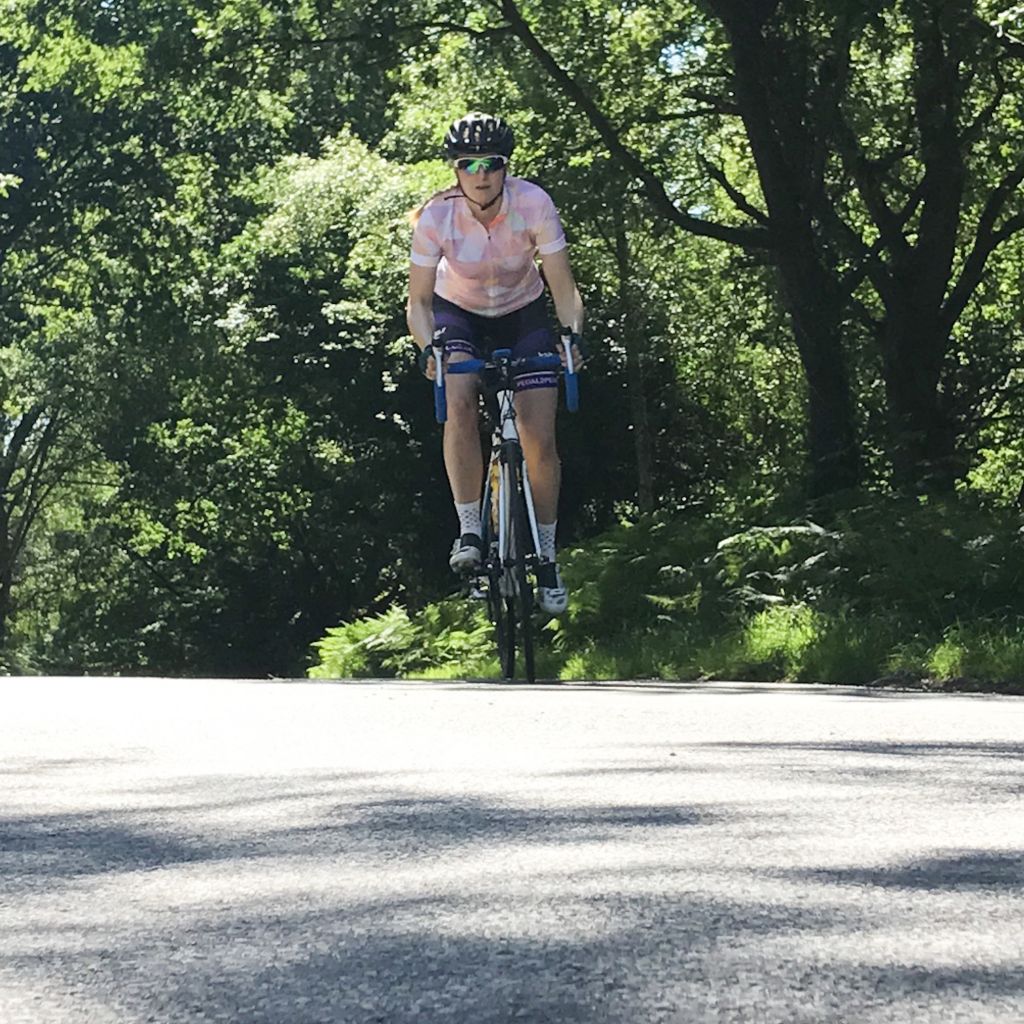
by hattenburrow | Jul 20, 2017 | Coaching, How to
Having spoken to some friends and followers I am going to write cycling tips every other week (I may put in some newbie mountaineering and kitesurfing tips to mix it up a little as well) Follow along my subscribing to my blog (link at bottom of home page). I hope you enjoy, comment with any questions about cycling.
To kick it off here are my top tips for better hill climbing.
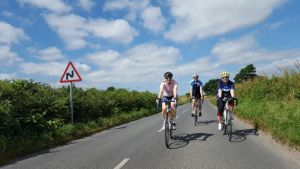
Long steady hill climbs can be really tough that feeling like the hill may never end is one I have felt many times before. But don’t fear most hills end, eventually and the reward of the view and a well-earned drink stop from the top can be well worth your achy legs and perspiration on the way up.

Tip one – When reaching the bottom of a climb don’t change down into your lowest gear, not only will your legs be spinning like crazy and you will lose the speed you have gained in the previous flat or downhill but you then have nowhere to go should the climb get steeper or more tricky. Instead if you need to change down one gear lower and work on a basis of when your cadence drops counting to 10 and then changing down, that way you get the most out of each gear change.
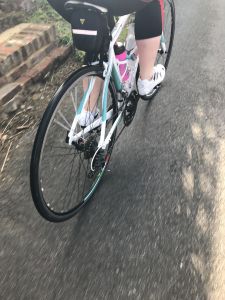
Tip two – Breath, as it starts to get harder doesn’t forget to breath, try breathing in and out in time with your pedal strokes in through your nose and out through you mouth if you can. Try not to breath too quickly as this will psyche you out.
Tip three – Look ahead and focus on breaking the hill down into milestones. Once it starts to get hard if the climb in lasting over 10/15 minutes break it down into manageable chunks and see every chunk as a mini goal that way you don’t think of the climb as one mega beast but several small beasts joined together, much more manageable!
Tip four – To stretch out your back and also work other muscles, if the hill is not too steep stand up on the pedals for sections of the climb this will allow you to put more power through the pedals. If the surface is loose don’t stand up as your weight on the back wheel will spin/slip out.
Tip five – Steady cadence, try and keep your pedals going round at a smooth & consistent pace. If you feeling like your pushing really hard on your pedals go down a gear or two, likewise if you feel your feet are spinning then you can probably go up a gear.
So these are my five top tips to improve your hill climbing if you would like more tips and coaching please get in touch.
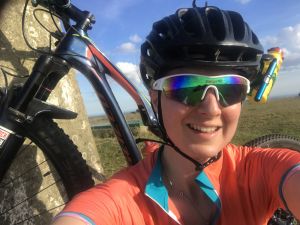

by hattenburrow | Feb 11, 2014 | Adventure, Inspiration
Sitting in the UK dreaming and planning a trip to Thailand was great fun. Waking up with the realisation that you are now in Thailand was a whole other level of incredible excitement, and after long nights/days sleep in Bangkok our adventure begun with a 4am plane journey.
We arrived in the mist of the rainforest, quickly stashed our bags in our room and ventured out into the jungle, it was incredible. I’ve never seen so many trees and flowers and so much water! A moment of not looking where I was going ended up with a leach clinging on to my big toe, lucky a quick reflex and determined not to end up having to have it burnt off, enabled me to shake the little bugger off! We trekked to a waterfall which was stunning.

On the way back from the waterfall two Thai boys on mopeds roared up to us and stopped to ask if we wanted a lift. Deciding the walk seemed rather far, we went for it and hopped on, I shot off into the rainforest on the back of a moped as I watched Martyn’s (my partner) moped slowly drift from view as we were going much faster. I thought about what I learnt at school about not talking to strangers, now I’m on the back of some guy’s bike in a foreign country, probably not the best idea in the world!
Arriving safely back to two feet again the language barrier didn’t seem to stop my new Thai friend and I chatting whilst we waited for the others to catch up.
The next day we went elephant trekking, elephants are mystical creatures, so big and awkward looking and yet graceful and friendly at the same time. Sitting on top of our new elephant friend we trekked through the plantations of rubber plants and bananas. The elephant’s master walked alongside and shouted things at the elephant who responded accordingly, very well trained elephants!

No More Jungle Adventures
Leaving the jungle was a sad day, we had made some great friends both human and animal! But our adventure went on as we now traveled to Koh Yao Noi which means Little Long Island (I will let you work out why) Arriving at the jetty from Phuket we rented a scooter to get around, this was a new learning curve for me having not really ever been on and never driven a scooter, Martyn picked one with gears and assured me he would ‘teach’ me how to ride it!

Ulmars nature lodge was a picturesque yoga retreat on the side of the island. The huts were made of bamboo and inside there was just enough room to walk down the side of the bed to the ‘ensuite’ by ‘ensuite’ I mean a toilet sink and shower in a concreted area out the back!
We had come to Koh Yao Noi to deep water solo, which is where you climb and then when you get tired or as high as you can go you jump into the water. Frustratingly the first two days on the island the rain had held us up and although we were enjoying the tranquility of the island, where there seemed to be only a handful of people, the need to adventure was starting to make our paradise island a little too small.

I woke the next morning half expecting to hear the pitter patter of rain drops on the roof of our hut but there was nothing, silence, I peaked out of the curtain to see beautiful blue sky and not a cloud in sight.

Wolfing down breakfast and jumping on our bike after checking twice that we had packed everything, we made it to the jetty in time to grab some lunch (fried chicken on rice with some kind of vegetable, pineapple made into handy to eat sticks and soup in a plastic bag). The long tail boat chugged out into the calm, inky blue water. The scenery was breath taking in every direction there was lush green islands and sandy beaches.

Rock Climbing and Diving
After a while the boat slowed and we helped to pull sit on kayaks off the roof of the boat and paddled up to the first climb. Staring up it didn’t look like much and I felt confident about climbing. It wasn’t until I watched Martyn try and balance between the wall and moving kayak which kept getting picked up by the swell and pushed into the wall that I realised this was no walk in the park. The rocks up close where gnarly and sharp from years of sea crashing into them. Finally he made the leap and shouted back that he was okay so I got out the camera to film him, he made it look so easy, but then he tended to make everything look easy. He traversed across and up about 8 -9 metres and then shouted to me to take a picture as he jumped.

My turn! As the kayak got closer to the wall I pulled on my climbing shoes and assessed the wall in front for the best route up, suddenly staring up at the wall it looked huge and I couldn’t see how on earth I couldn’t make the jump Martyn had, standing up on the kayak nose and touching the rock it was wet as well as sharp. “Oh great! what a barrel of laughs this is going to be ! ” I thought, as the swell made me practice the splits as my hands were perched on the rock. With one foot below and the other tantalisingly close to taking a dip I made the decision to go for it and with a leap jumped to the rocks.
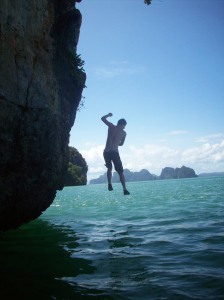
Scaling the wall was a lot easier now and I quickly progressed around and up where I had seen Martyn go. I decided not to go so high, with my Dads voice in my head saying “just remember once you have climbed up you have to jump off”. Not being a fan of usual abseiling when climbing this was sound advice as when I turned to jump off, even from around 3 metres up it looked scary! I decided to traverse a little further round and down slightly, this seemed a lot less scary but still I couldn’t bring myself to let go of the rock. Now with an audience of Martyn, the captain of the boat we arrived on and our guide, and with lots of encouragement I shut my eyes, held my nose and jumped.
Overall Thailand gets an A from me. It’s such an epic country and there’s a whole load of things to see and do. The people were also so, so friendly and always seem eager to help where they can.
If anyone has any questions or would like some insights into arranging a trip to Thailand and what to do when getting there please let me know in the comments below.

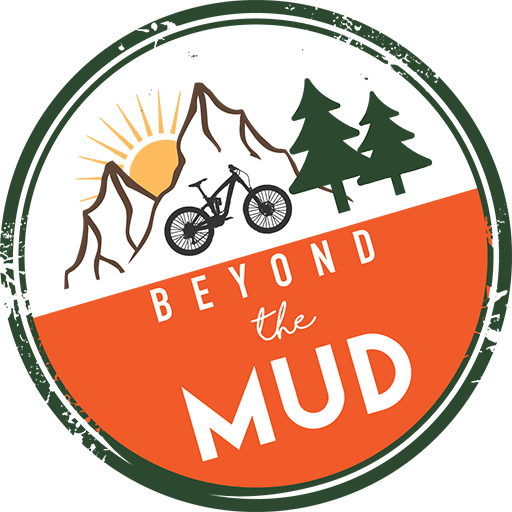



 Climbing amongst the very different type of (soft) sandstone found in the deserts here is simply spectacular, and to be honest, sometimes rather scary! But it is always thrilling, beautiful, and again, there is something for everyone. The locals are incredible and happy to guide you around what is sure to be a memorable experience even if you don’t climb. However, be sure to bring your own gear and do your own organising and planning of the trip, as climbing as the western world knows it is very different to life in the small village of Rum.
Climbing amongst the very different type of (soft) sandstone found in the deserts here is simply spectacular, and to be honest, sometimes rather scary! But it is always thrilling, beautiful, and again, there is something for everyone. The locals are incredible and happy to guide you around what is sure to be a memorable experience even if you don’t climb. However, be sure to bring your own gear and do your own organising and planning of the trip, as climbing as the western world knows it is very different to life in the small village of Rum.



 Trad Climbing
Trad Climbing













